176 Perry Street: Review and Ratings
between West Street & Washington Street View Full Building Profile
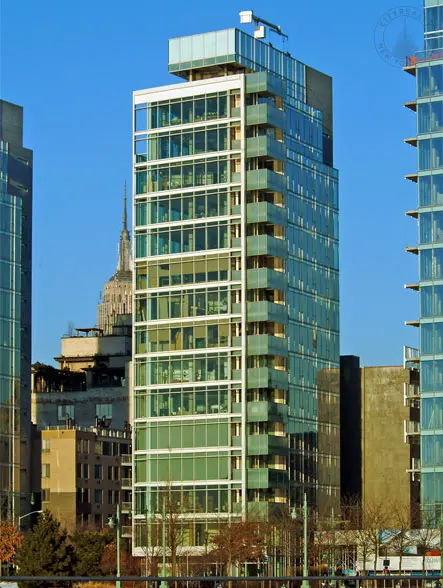

176 Perry Street was the second of three mid-rise residential condominium buildings facing the Hudson River designed by Richard Meier.
It and 173 Perry Street, both completed in 2002, were developed by Richard Born, Ira Drukier and Charles Blaichman.
The third tower just to the south of the first two, 165 Charles Street, was completed in 2005 and developed by Izak Senbahar and Simon Elias.
176 Perry Street is the wider of first two very similar towers that set a new design standard for mid-rise residential buildings in Manhattan.
Mr. Meier was one of the "New York Five" architects who came to prominence in the late 1960s and early 1970's and were famed for their adoption of the clean and bright lines of Le Corbusier. (The other four were Peter Eisenman, Michael Graves, the late Charles Gwathmey, and the late John Hedjuk.)
Bottom Line
These very elegant, neat, mid-rise, riverfront Richard Meier apartment buildings significantly reinforced the lower Hudson River waterfront as the neighborhood of choice for the “hip,” “chic” and rich. Although the design of these towers was not remarkable given the contemporary state of architecture around the world, it was very classy for New York, sort of a white- and mini-Seagram Building aesthetic of sharp lines and nicely proportioned grids.
Description
This subtle building belies its conservatism with deceptively simple modernism and is a clear-cut classic.
The Perry Street towers are not perfect twins. The west façade of the south tower is slightly broader than that of the north tower. And the Charles Street tower by Meier is even broader, which actually makes for a more interesting ensemble.
The façades of these Meier buildings combine floor-to-ceiling windows encased in white steel with slim green spandrels and the southwest corners of the Perry Street towers have small green-glass balconies. The white steel elements of the Perry Street towers protrude a bit, giving the buildings a nice, handsome texture.
The western façades have a white-steel "frame" that extends beyond the building at the southwest corner and is in front of the balconies that extend even further. The extended frame is something of a conceit as it is gratuitous construction but it is not glaringly offensive. The north tower, which is the narrowest, has one apartment per floor while the south tower has two apartments.
Both buildings are set in minimalist dark gray granite plazas and have handsome and abstract entrance canopies. The overall design is not dissimilar from that of good-looking small suburban office buildings.
They are across West Street from the Hudson River Park, which opened about the same time and is extremely attractive with broad lawns and plentiful seating for watching sunsets and gazing at the Lower Manhattan and Jersey City skylines.
In his review of the Perry Street buildings in the June 19, 2003 edition of The New York Times, Herbert Muschamp wrote that “lately, Richard Meier has been reclaiming the rare quality that he started out with. I mean the quality of radiance: the Apollonian virtues of clarity, order, simplicity and light,” adding that “A formal vocabulary that once seemed constrained by the dogmas of the International Style now stands for freedom from the woollier rhetoric of the postmodern 1980s.”
“The lightness of the floor slabs and structure columns is further refined by the pristine delicacy of the exterior’s white metal frames. Shadow boxes, mullions and railing appear to stretch the glass skin taut against the envelope formed by the slabs. Balconies with tinted blue glass side panels extend the platforms beyond the skin. The south façades mirror each other across Perry Street, uniting the double block. It strikes me that the towers are a pair of Hitchcock blondes. The white metal framework of their façades is so crisp and pure that the towers could be two twins dressed for First Communion. But inside, fireworks: two towers full of racy Rear Windows. I do believe that’s Miss Torso up there, practicing jazz dance right now. Soon to be joined by Nicole Kidman, Calvin Klein, Jean Georges Vongerichten and I forget the rest. How will they handle window treatments. The world anxiously awaits.”
Amenities
This building has a long pool along West Street but not sidewalk landscaping.
It also has a swimming pool and a doorman.
Apartments
Apartments have 11-foot ceilings and windows have three layers of insulated glass.
The sixth floor apartment has a 27-foot-long gallery from the elevator core at the rear of the building and it leads to a 51-foot-long angled great room with a 19-foot-long balcony at the southwest corner. The living room has a large open kitchen with an island that leads to a 31-foot-long master bedroom. The unit also has a second bedroom that is 23-feet long.
The triplex apartment on the 8th, 9th and 10th floors has a 51-foot long recreation room on the 8th floor, a 51-foot-long, mostly double-height living room on the 9th floor that opens onto a 54-foot-long dining/gallery space that is connected by a very long pantry to a large open kitchen on the north side of the building, and the 51-foot-long master bedroom on the 10th floor with a 26-foot-long studio/exercise room.
History
Richard Meier is best known for his 1970 renovation of a former Bell Labs building in the West Village for the Westbeth artists at West and Bethune Streets, his design of the huge Getty Center in Los Angeles, the High Museum in Atlanta, Georgia, the Atheneum in New Harmony, Indiana, and the former Bronx Developmental Center, which was erected in 1978 and had been operated by the New York State Office of Mental Retardation and Developmental Disabilities.
The "mini" "twins" of the first two buildings in this enclave attracted many celebrities and significantly reinforced the lower Hudson River waterfront as the neighborhood of choice for the "hip" and "chic" and rich.
Unspoken, their lovely "twinness" and downtown waterfront location also conjured memories of the fallen Twin Towers of the World Trade Center that were demolished in the terrorist attacks of September 11, 2001.
Meier's design at 176 Perry Street attracted celebrity buyers such as Calvin Klein, the designer, and Jean-Georges Vongerichten, the famous restaurateur. Mr. Vongerichten, who bought an apartment opened a restaurant in the lobby of 176 Perry Street.
After taking a helicopter ride over the site with Mr. Meier, Mr. Klein enthusiastically paid $8 million for the top two floors, later buying a third floor unit for $6 million.
Nicole Kidman, the actress, then bought the apartment below Mr. Klein’s for $8 million from Mr. Meier who had bought it for $3.8 million according to a lengthy article in the June, 2004 issue of Vanity Fair by Vicky Ward.
Other buyers at 176 Perry Street included Bill Joy, the co-founder and former chief scientist at Sun Microsystems, Hugh Jackman, the actor, Scott Resnick, whose family are prominent real estate developers in the city, and Rita Schrager, a former ballet dancer and the ex-wife of Ian Schrager, the hotelier.
Each floor at 173 Perry Street contains about 1,800 square feet but at 176 Perry Street each floor is about 3,750 square feet. Ms. Ward wrote that one resident said “we call it the poor persons’ tower.” Not only was it larger, it also had stunning views of Lower Manhattan to the south.
Those views, however, would be largely obstructed by the addition of a third building designed by Meier on the block just to the south for a different set of developers at 165 Charles Street.
The third building upset some of the residents in the first two Meier buildings, according to Ms. Ward’s article, which was titled “Faulty Towers.” She quoted one resident, Vincent Gallo, as stating that “You won’t believe what’s going on in these buildings. It’s a microcosm of everything ugly in human beings – beautiful, beautiful architecture desecrated by scandal, greed, conniving, and gluttony.”
Her article reported that “both buildings have been plagued with leaks and heating problems.”
Two of the developers of 173 and 176 Perry Street, Richard Born and Ira Drukier, renovated and converted the Stanhope Hotel at 995 Fifth Avenue into residential condominiums, and they developed the Chambers Hotel on West 56th Street and the Mercer Hotel in SoHo. Mr. Born was a doctor and Mr. Drukier an electrical engineer and they were partners in the Maritime Hotel in Chelsea and at one point they sold the property that would be developed as the Gansevoort Hotel in the Meatpacking District.
An article by Gabriel Sherman in the June 14, 2004 issue of The New York Observer noted that Nicole Kidman, the actress who "joined the celebrity flotsam in her 4,000-square-foot loft at Perry Street," was "reportedly smarting over the pending construction of Mr. Meier's third fishbowl tower at 165 Charles Street, as the building is set to steal the star's coveted Hudson River views."
While imitation may be the sincerest form of flattery, the third Meier tower is quite a remarkable chapter in the city's real estate one-up-man-ship history. Views, of course, are very important to buyers but they are not protected by the city's zoning and building regulations. It is understandable that buyers in the southern Perry Street Meier tower were surprised to discover that their southern views would be blocked so quickly and, moreover, that the Richard Meier cachet of exclusive design would also be compromised so quickly.
From an urbanistic viewpoint, of course, a phalanx of three extremely attractive "modern" mid-rise towers along the waterfront is not a bad thing, especially when their design is coordinated by the same architect. It is unusual, of course, for them to have been erected by different developers. The Seagram Building and Lever House, of course, spawned countless imitators but not directly across the street.
An April 27, 2004 article by Sam Lubell in Architectural Record magazine quoted Mr. Meier, who won the Pritzker Prize for Architecture in 1984, as saying that the third tower on Charles Street "gives us the opportunity to further develop and evolve the design of my first two towers," adding that "It's like music. One note is nice, but as you add notes you can create something different."
An earlier article by Gabriel Sherman said that Mr. Meier said that 165 Charles Street is “like a cousin, not a brother or sister. So it’s related, but it’s different.” In the same article, Mr. Senbahar is quoted as saying that “people, at the end of the day, are going to be happy to have a Richard Meier building next to them rather than a printer,” referring to the industrial lot where he was erecting 165 Charles Street.
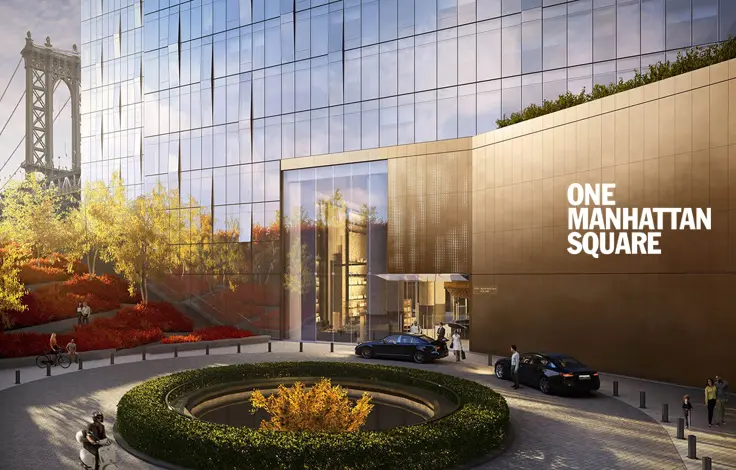
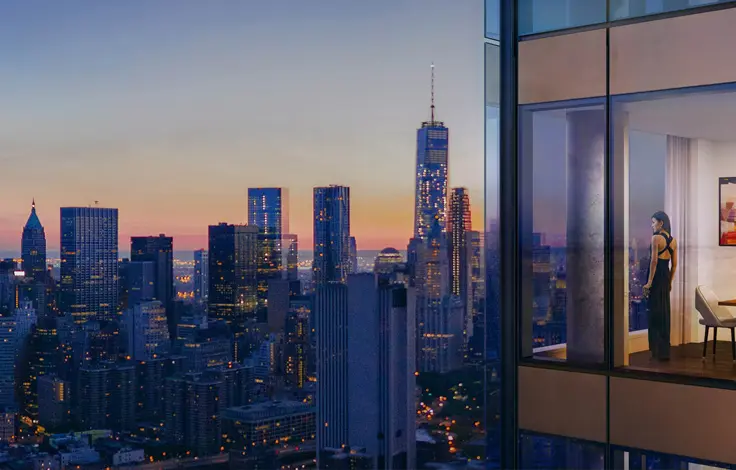
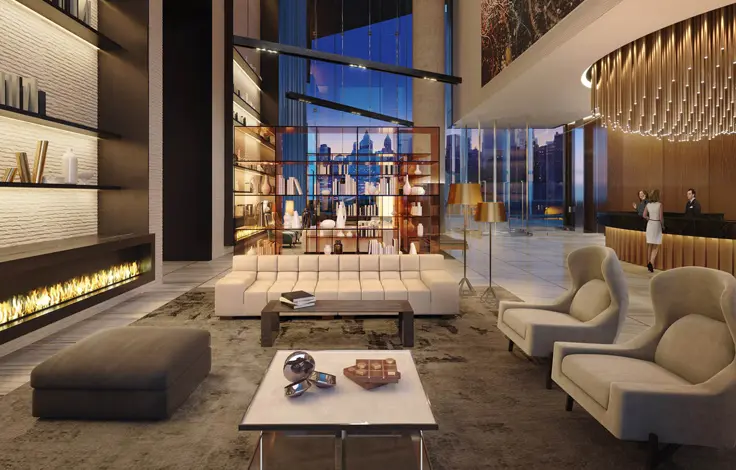
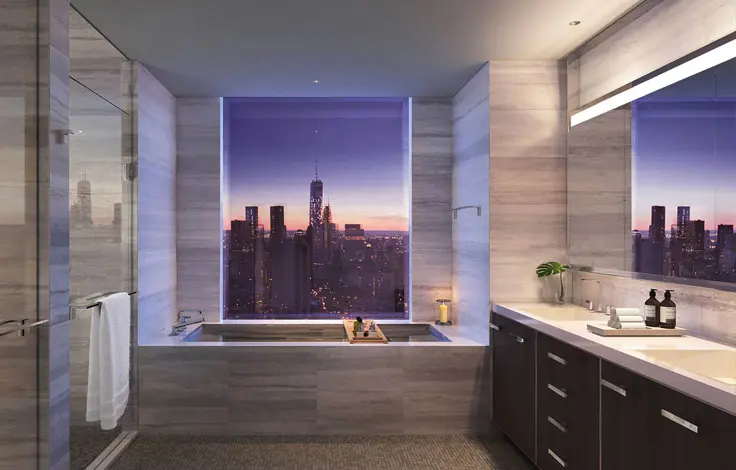
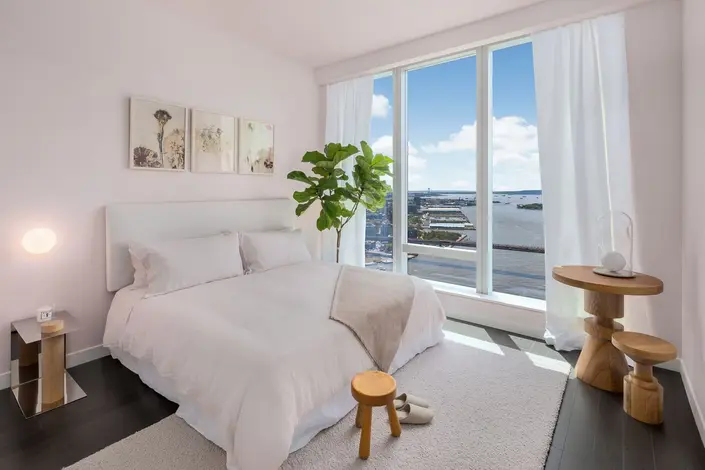
 6sqft delivers the latest on real estate, architecture, and design, straight from New York City.
6sqft delivers the latest on real estate, architecture, and design, straight from New York City.
